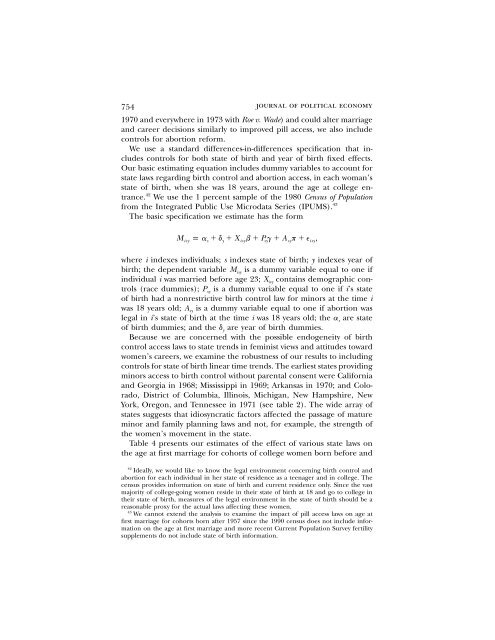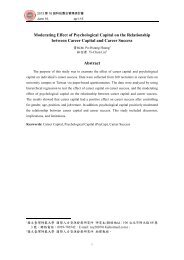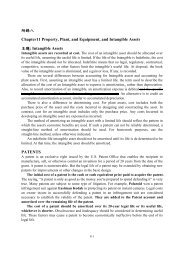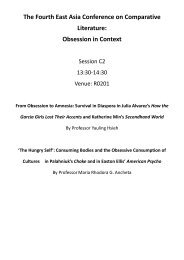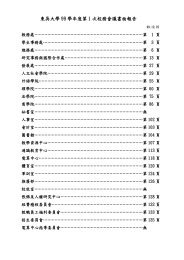The Power of the Pill: Oral Contraceptives and Women's ... - Mail
The Power of the Pill: Oral Contraceptives and Women's ... - Mail
The Power of the Pill: Oral Contraceptives and Women's ... - Mail
Create successful ePaper yourself
Turn your PDF publications into a flip-book with our unique Google optimized e-Paper software.
754 journal <strong>of</strong> political economy<br />
1970 <strong>and</strong> everywhere in 1973 with Roe v. Wade) <strong>and</strong> could alter marriage<br />
<strong>and</strong> career decisions similarly to improved pill access, we also include<br />
controls for abortion reform.<br />
We use a st<strong>and</strong>ard differences-in-differences specification that includes<br />
controls for both state <strong>of</strong> birth <strong>and</strong> year <strong>of</strong> birth fixed effects.<br />
Our basic estimating equation includes dummy variables to account for<br />
state laws regarding birth control <strong>and</strong> abortion access, in each woman’s<br />
state <strong>of</strong> birth, when she was 18 years, around <strong>the</strong> age at college entrance.<br />
42 We use <strong>the</strong> 1 percent sample <strong>of</strong> <strong>the</strong> 1980 Census <strong>of</strong> Population<br />
from <strong>the</strong> Integrated Public Use Microdata Series (IPUMS). 43<br />
<strong>The</strong> basic specification we estimate has <strong>the</strong> form<br />
M p a d X b P g A p e ,<br />
isy s y isy sy sy isy<br />
where i indexes individuals; s indexes state <strong>of</strong> birth; y indexes year <strong>of</strong><br />
birth; <strong>the</strong> dependent variable M isy is a dummy variable equal to one if<br />
individual i was married before age 23; X isy contains demographic controls<br />
(race dummies); P sy is a dummy variable equal to one if i’s state<br />
<strong>of</strong> birth had a nonrestrictive birth control law for minors at <strong>the</strong> time i<br />
was 18 years old; A sy is a dummy variable equal to one if abortion was<br />
legal in i’s state <strong>of</strong> birth at <strong>the</strong> time i was 18 years old; <strong>the</strong> a s are state<br />
<strong>of</strong> birth dummies; <strong>and</strong> <strong>the</strong> d y are year <strong>of</strong> birth dummies.<br />
Because we are concerned with <strong>the</strong> possible endogeneity <strong>of</strong> birth<br />
control access laws to state trends in feminist views <strong>and</strong> attitudes toward<br />
women’s careers, we examine <strong>the</strong> robustness <strong>of</strong> our results to including<br />
controls for state <strong>of</strong> birth linear time trends. <strong>The</strong> earliest states providing<br />
minors access to birth control without parental consent were California<br />
<strong>and</strong> Georgia in 1968; Mississippi in 1969; Arkansas in 1970; <strong>and</strong> Colorado,<br />
District <strong>of</strong> Columbia, Illinois, Michigan, New Hampshire, New<br />
York, Oregon, <strong>and</strong> Tennessee in 1971 (see table 2). <strong>The</strong> wide array <strong>of</strong><br />
states suggests that idiosyncratic factors affected <strong>the</strong> passage <strong>of</strong> mature<br />
minor <strong>and</strong> family planning laws <strong>and</strong> not, for example, <strong>the</strong> strength <strong>of</strong><br />
<strong>the</strong> women’s movement in <strong>the</strong> state.<br />
Table 4 presents our estimates <strong>of</strong> <strong>the</strong> effect <strong>of</strong> various state laws on<br />
<strong>the</strong> age at first marriage for cohorts <strong>of</strong> college women born before <strong>and</strong><br />
42<br />
Ideally, we would like to know <strong>the</strong> legal environment concerning birth control <strong>and</strong><br />
abortion for each individual in her state <strong>of</strong> residence as a teenager <strong>and</strong> in college. <strong>The</strong><br />
census provides information on state <strong>of</strong> birth <strong>and</strong> current residence only. Since <strong>the</strong> vast<br />
majority <strong>of</strong> college-going women reside in <strong>the</strong>ir state <strong>of</strong> birth at 18 <strong>and</strong> go to college in<br />
<strong>the</strong>ir state <strong>of</strong> birth, measures <strong>of</strong> <strong>the</strong> legal environment in <strong>the</strong> state <strong>of</strong> birth should be a<br />
reasonable proxy for <strong>the</strong> actual laws affecting <strong>the</strong>se women.<br />
43<br />
We cannot extend <strong>the</strong> analysis to examine <strong>the</strong> impact <strong>of</strong> pill access laws on age at<br />
first marriage for cohorts born after 1957 since <strong>the</strong> 1990 census does not include information<br />
on <strong>the</strong> age at first marriage <strong>and</strong> more recent Current Population Survey fertility<br />
supplements do not include state <strong>of</strong> birth information.


